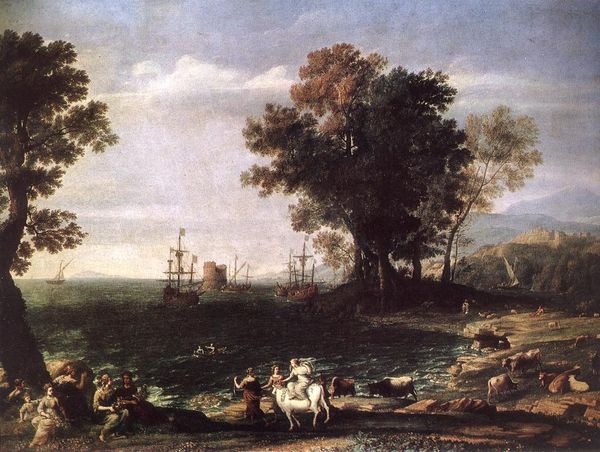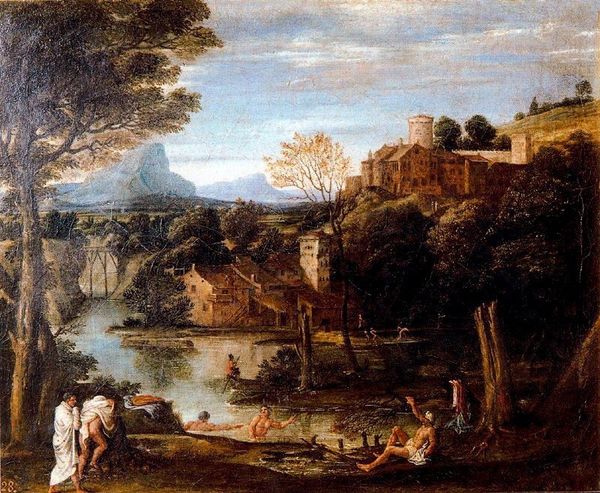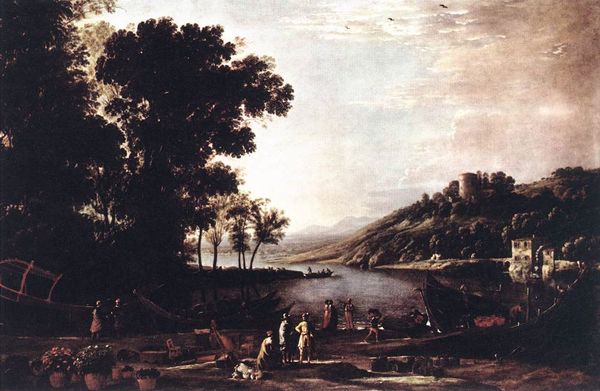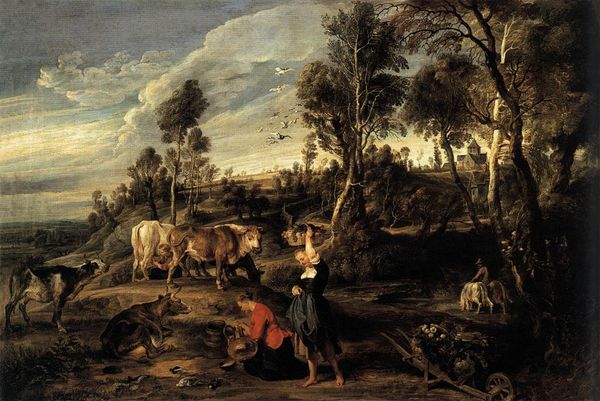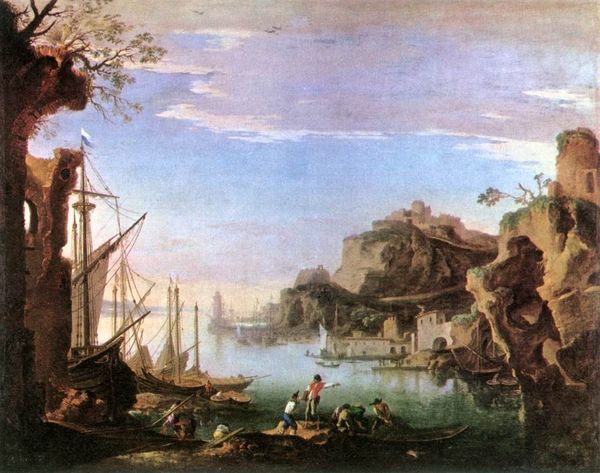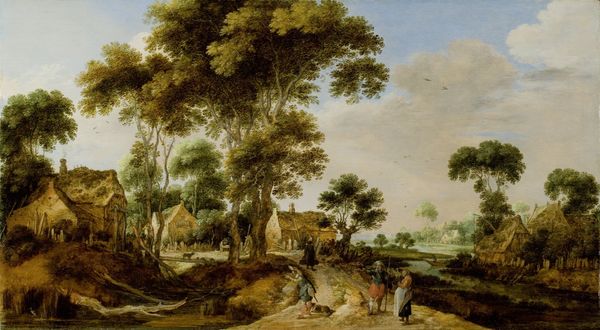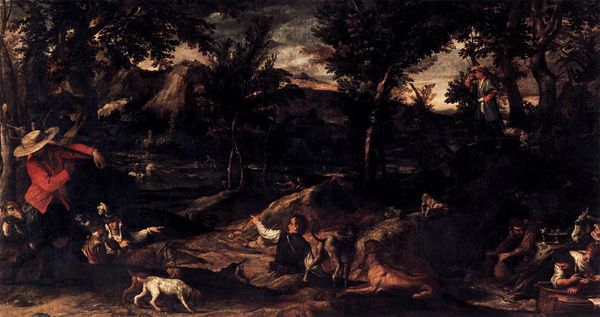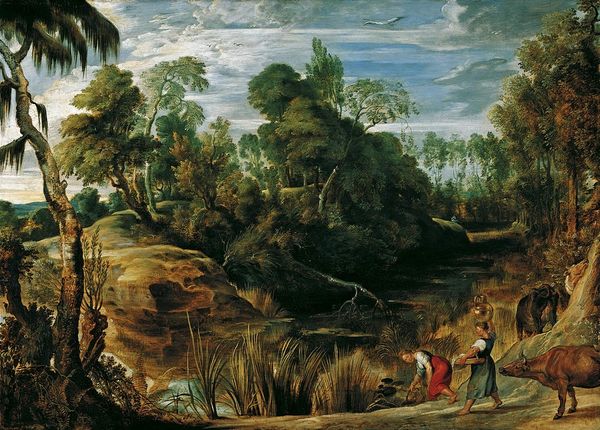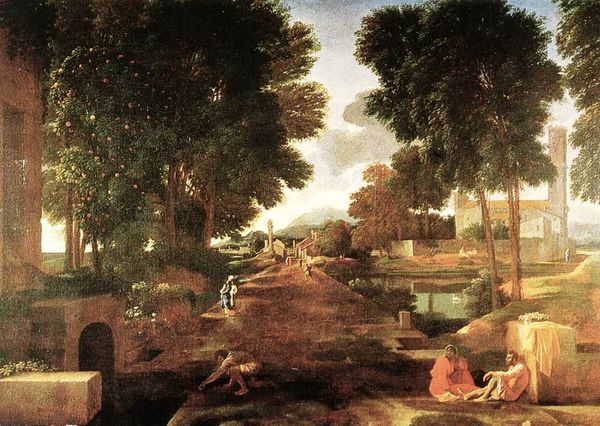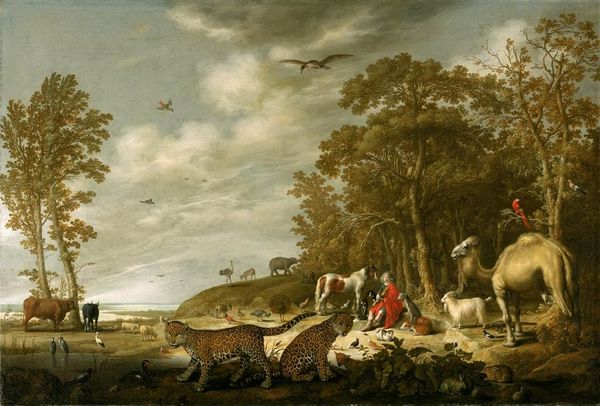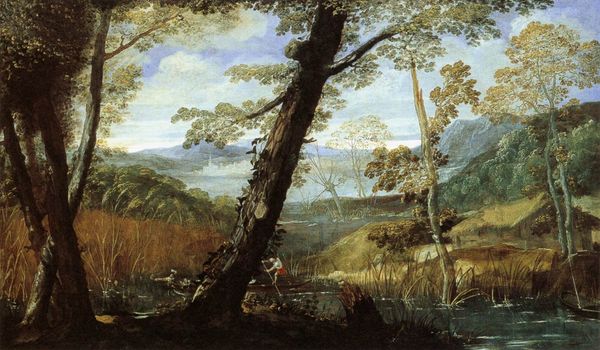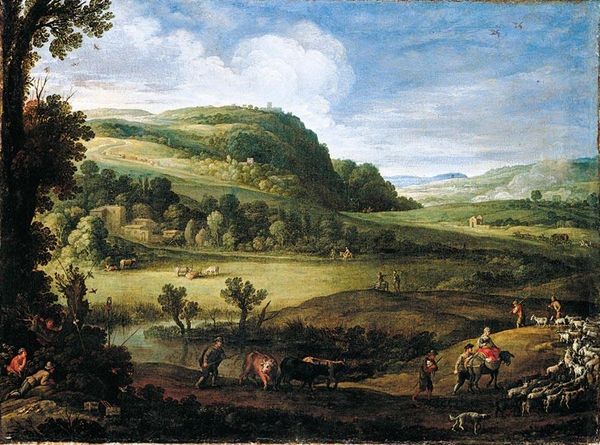
painting, oil-paint
#
boat
#
baroque
#
ship
#
painting
#
oil-paint
#
landscape
#
river
#
figuration
#
oil painting
#
water
#
genre-painting
#
italian-renaissance
#
realism
Dimensions: 253 x 136 cm
Copyright: Public domain
Curator: Looking at this scene, I'm struck by the subdued palette. It feels very grounded, very much about the real lives of these figures. Editor: Indeed. This is "The Fishing," an oil painting by Annibale Carracci from 1596, and you can currently find it hanging in the Louvre, in Paris. What aspects in particular draw you in? Curator: The almost casual nature of the scene. The figures aren't posed; they're caught in the act of working, resting, even bickering. And the light feels… natural. It lends such an intimacy to the landscape, it invites you to become part of the daily happenings within the river bank. Editor: Precisely. Carracci's work here presents us with an intriguing insight into the development of genre painting in Italy. It reflects the increasing interest in depicting everyday life during the late 16th century. He challenges the norms by merging landscape with figuration. Instead of simply being background to a historical narrative, the landscape here, with its river and human activity, holds just as much value. It brings art into dialogue with the broader public life. Curator: Do you think there is something performative in their naturalness? Perhaps this very depiction is trying to capture a moment when there's no need for pretension. A snapshot, yes, but one created to evoke simplicity in a world of complexity. Editor: It certainly opens a conversation about authenticity. It encourages you to consider, as you're saying, what Carracci is suggesting through the work about nature and social hierarchies. And the river... its meandering course and function as source and backdrop also adds so much. Curator: In viewing "The Fishing" I find myself longing for simplicity. In this work, the current calls for slow days of labor and the sky's hazy weather allows space to find clarity among complexity. Editor: Indeed, Carracci uses this canvas to invite us to see the ordinary as meaningful and beautiful, prompting us to find new relevance in what might seem, initially, everyday moments.
Comments
No comments
Be the first to comment and join the conversation on the ultimate creative platform.
